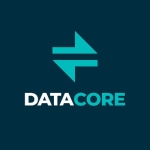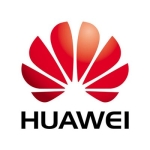What is our primary use case?
It is for the production virtual environment. I have virtualized almost 99 percent of my servers, and I'm using SimpliVity as a host for those virtual machines.
It does what needs to be done for us. The main thing for us is to make sure that we can recover a failed VM on a different site if the primary site fails. We need to be able to recover on the DR site. The performance was the main focus.
How has it helped my organization?
The department that ran our reporting in the legacy environment, it took them about six hours to run their report. Now, it is taking the same department less than an hour.
We aren't using a lot of space because it does everything that we need it to do on the back-end, which is a good thing.
What is most valuable?
- The performance
- The backups
- The DR strategy
- The deduplication is great.
What needs improvement?
My main problem with the solution is that it is taking too much memory for something that we don't build. We are not creating the VM; it is created by the deployment. It is the SimpliVity solution which is using the memory that I was counting on for my production part. This is the biggest problem that I have. I know that the VM has to built there, but I would hope that they have a different area in the system to use this different type of memory. The production memory should stay with the customer when the machine is built, and during deployment, it should use different memory.
For how long have I used the solution?
We just implemented the lightest cluster a month ago.
What do I think about the stability of the solution?
So far, the stability is good. We don't have any issues. Everything is running 24/7.
What do I think about the scalability of the solution?
How are customer service and technical support?
We have not had many technical support calls. However, we had one call which was not completely answered to our satisfaction. Are they capable of answering that question or not? Based on that particular call, we didn't receive the right answer.
Which solution did I use previously and why did I switch?
I used a three-tier solution, meaning SAN, hosts, and the network fabric. I wanted to move away from the three point failure environment into the single mirror environment, especially for performance.
I didn't know what exactly what I was looking for in the beginning. I knew we needed to move away from our legacy environment into the hyper-converged world. Therefore, I was looking at different solutions. I knew that Nutanix was the big one out there, and is still the big one out there. Somehow, I landed on the SimpliVity site.
How was the initial setup?
Initially, the setup was complex for us. Once you know the product, we are planning to do the deployments ourselves now because we understand everything (most of it). We recorded what we needed and can redeploy the systems to a different clusters going forward.
What about the implementation team?
We used an integrator through HPE. Our experience with them was great. Everything worked well. We didn't have any hiccups.
What's my experience with pricing, setup cost, and licensing?
For three years, it is $60,000 for three nodes. It is quite pricey.
Which other solutions did I evaluate?
Nutanix was the closest to the HPE SimpliVity product. I had better conversations with the salespeople from HPE. They were able to explain how the solution worked and how it does everything I needed, so that naturally helped me with my decision.
What other advice do I have?
The solution is great. Make sure you are aware of everything before you commit to deploying or purchasing it.
Disclosure: My company does not have a business relationship with this vendor other than being a customer.













